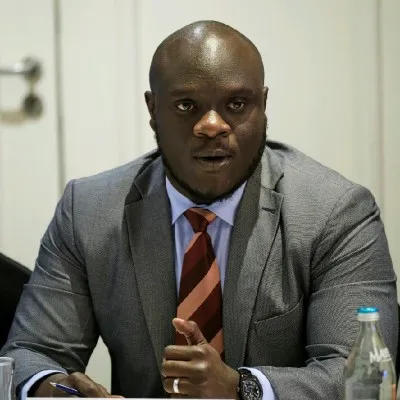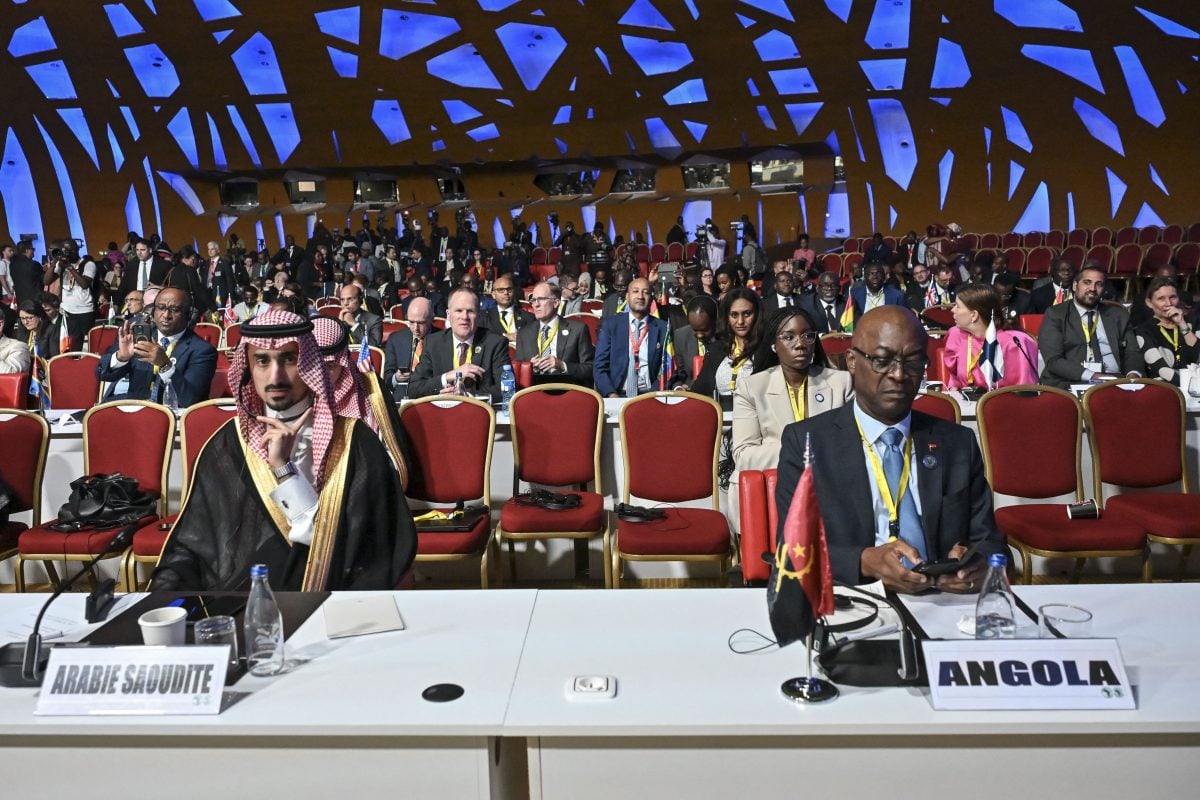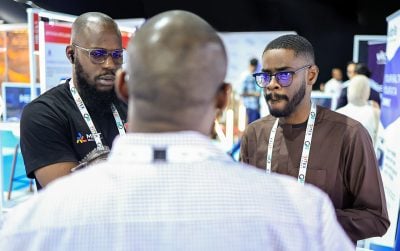Calls for Africa to strengthen its economic self-reliance and develop using its own capital intensified at the African Development Bank (AfDB) annual meetings in Abidjan, where more than 6000 delegates assembled for five days of meetings and discussions on Africa’s development landscape. Africa is grappling with a significant development funding squeeze amid drastic cuts to foreign aid by western nations.
On top of dismantling USAID and freezing billions of dollars in foreign aid, Washington is reconsidering a $555m development finance commitment to the AfDB. European nations have also slashed overseas development assistance budgets in recent months, adding to the financial strain facing African countries that heavily rely on foreign aid to fund government programmes in education, healthcare and infrastructure.
No free lunch
The question of how Africa can navigate this challenging funding environment hung heavy in the air during the course of the annual meetings. Leaders and experts who spoke stressed that the time was nigh for Africa to shift its attention to domestic and alternative sources of capital. Africa, they argued, must harness its own capital – natural, human, and financial – to drive a new era of economic self-reliance.
“We can’t keep waiting for outsiders. Our roads, schools, and jobs should be built with our own capital. It’s time to invest in ourselves,” President Alassane Ouattara of Côte d’Ivoire said during the official opening ceremony.
John Mahama, president of Ghana, urged African leaders to view self-reliance as a strategic imperative in view of ongoing geopolitical shifts around the globe. “We’ve transitioned into a transactional world, which signals to Africa that we need to pull ourselves up by our bootstraps,” he said.
“Unfortunately, the system is being amended and countries have decided to impose tariffs based on their own interest. It sends a signal to Africa that there is no free lunch anywhere,” he added.
Untapped domestic resources
The African Development Bank’s African Economic Outlook 2025 (AEO) report, launched during the AfDB annual meetings, contends that, with the right policies, Africa could mobilise an additional $1.43 trillion in domestic resources from tax and non-tax revenue sources. This exceeds Africa’s estimated $1.3 trillion annual gap in financing to achieve the Sustainable Development Goals (SDGs) by 2030, the report notes.
Delving into some of the major reforms needed to harness the continent’s untapped domestic resources, the report states that “Africa must broaden its revenue base, curb resource leakages, formalise its vibrant informal sector, deepen domestic financial markets and enhance the efficiency of public spending as well as tap into the transformative power of the diaspora.”
Speaking during the report’s unveiling, Kevin Uramah, AfDB’s chief economist and vice president, stressed that revenue leakages were a persistent challenge undermining the pace and scale of development across the continent.
Compared to $190.7bn of financial inflows that Africa received in 2022, approximately $587bn was lost from financial leakages, the AEO report highlights. Of this, around $90bn was lost to illicit financial flows, a further $275bn was siphoned away by multinational corporations shifting profits, and $148bn was lost to corruption.
“There can be no substitute for sound macroeconomic policy management, quality institutions, good governance and the rule of law,” Uramah said.
Even though the continent has broadly recovered from the shocks of recent years such as inflation and the Covid-19 pandemic, the macroeconomic situation remains fragile in some countries. Indeed, the AEO report notes that fifteen countries are experiencing double-digit inflation, while interest payments now consume 27.5% of government revenue across Africa, up from 19% in 2019.
Uramah argued that allocating more of Africa’s own capital to fund its development would catalyse additional investment from global investors by demonstrating to them that locals have skin in the game.
“When Africa allocates its own capital – human, natural, fiscal, business and financial – effectively, global capital will follow Africa’s capital to accelerate investments in productive sectors in Africa,” he said.
Bringing in domestic institutional capital
According to Frannie Léautier, a nonresident fellow with the Atlantic Council’s Africa Center, leveraging Africa’s domestic institutional capital – such as assets held by pension funds, sovereign wealth funds, and insurance firms – will require a relentless focus on innovation and extensive regulatory reform. She believes that there is scope for African pension funds, which held assets worth $455bn in 2024, to invest more heavily in low-income countries through the African Development Fund (ADF), which is the AfDB’s concessional funding window. Pension funds cannot currently invest directly in the ADF.
“The African Development Fund can only receive capital from member countries. There are some reforms that are currently underway to bring in capital from outside the traditional member countries. This could open the way for African pension funds to get more involved,” she tells African Business on the sidelines of the AfDB annual meetings. She says that investing in the ADF presents African pension funds with an opportunity to earn “double returns, because you get a return in boosting economic growth and jobs, but you also get your funds repaid”.
Léautier says that the ADF is presently leveraging innovative tools such as partial risk guarantees and private credit guarantees to de-risk the private sector and make projects more attractive to risk-averse investors. This can help attract investments from pension funds into projects and countries. Partial risk guarantees are designed to insulate private lenders against political and regulatory risks that may arise due to state-related entities failing to honour contractual obligations. Private credit guarantees, on the other hand, enhance the credit-worthiness of ADF countries and state-owned enterprises, enabling them to access commercial financing more competitively.
“On the equity side, we have innovations like taking first loss in an equity structure. This is very good, in particular for pension funds, who have to pay for their members’ retirement and must make sure that their investment is not lost.”
“When you have these kinds of structures, they [pension funds] become more comfortable to invest in private sector transactions,” she says.
Stressing the ADF’s role in “paving the way for the private sector to invest and create jobs,” she urges ADF member countries to scale up their contributions to the fund in its 17th replenishment. ADF is targeting $25bn in this current funding cycle – an ambitious increase from the record $8.9bn (including $429m for a new climate window) that was raised in the 16th cycle.
Innovative financing
Kader Hassane, senior investment director at Africa50, tells African Business that the platform’s innovative approach to financing has allowed it to mobilise institutional capital for infrastructure development in Africa. This includes tapping into African pension fund money through the Africa50 Infrastructure Acceleration Fund (IAF), a 12-year closed-ended private equity fund designed to mobilise large-scale institutional capital for infrastructure projects.
“For the first time in Africa, we were able to launch an infrastructure fund and raise over $200m almost exclusively from African institutional investors,” Hassane says. “What we’re hoping for is that this is a proof of concept. We have pension funds from Morocco, Côte d’Ivoire, Cameroon, and even PIC [the Public Investment Corporation] from South Africa involved.”
Sponsored by Africa50, IAF secured $222.5m in commitments from 16 African institutional investors in its first close in December 2023. It is aiming for $500m in total commitments and focuses on equity and quasi equity investments.
Some of the raised capital has already been deployed in a port project in Casablanca, Hassane says, noting that the goal is to build a strong pipeline of commercially viable projects with clear development impact. “We must deploy properly and ensure a track record. Once African pension funds can see that you can make a return and at the same time develop your continent and invest in infrastructure, I am confident we are going to be able to raise a lot more money,” he said.
Africa50 was founded by African governments and the AfDB in 2015. Hassane points out that “a focused and innovative approach” is what make Africa50 unique and able to leverage its balance sheet to catalyse billions in private investment in African infrastructure. “Our capital base is not the largest (currently slightly over $895m) but we pride ourselves on having capitalised more than $8bn worth of portfolio projects” he explains. “In the last eight years we have turned over 29 projects in 28 different jurisdictions – quite a feat in the African context. Because we are smaller we tend to be more nimble and can address the niches of the market. This is really the DNA of Africa50. It is speed, efficiency and innovation in our delivery,” he says.
He notes that four sectors currently dominate Africa50’s portfolio: energy; transport; information and communications technology; and mid-stream gas. “These sectors represent more than 85% of our portfolio. We have opened up a bit to include health and education.”
Looking forward, Hassane argues that asset recycling is one of the ways Africa50 will seek to collaborate with governments to catalyse additional private investment in infrastructure amid funding constraints. He notes that Africa50 is championing asset recycling in a bid to help African governments optimise their resources and develop much-needed infrastructure without increasing public debt.
“The process begins with governments identifying infrastructure projects that will attract private investors. The focus is on commercially viable, revenue-generating assets such as toll roads, airports, or power plants. Once the asset is operational, the government can grant a long-term concession to a private investor, such as Africa50, to operate and maintain the asset in exchange for an upfront payment.”
The upfront payment unlocks immediate liquidity for the government, which can utilise the funds unlocked by the transaction to upgrade existing infrastructure or develop new assets. “The government can take this money and develop new infrastructure, which we can again help them recycle. So it’s about enabling governments to move faster, to close infrastructure gaps while preserving fiscal space,” he says.
“We have done it in Gambia with the Senegambia bridge. It cost the government $130m to build it and we are giving them $93m up front in two tranches,” he notes.
Bigger share of natural resource wealth
According to the AEO report, Africa hosts 30% of global mineral reserves. With the right policies that enable Africa to stake a greater economic claim on its natural resources, the continent stands to capture over 10% of the projected $16 trillion in global revenues from key green minerals by 2030.
The continent’s mining sector is presently dominated by foreign firms that mostly focus on the extraction and exportation of raw minerals, limiting the flow of natural resource wealth to local people. While global mining giants continue to dominate large-scale operations, local entrepreneurs running early-stage mining companies face significant hurdles scaling their businesses. This is primarily due to challenges in accessing domestic capital.
Most of the domestic capital in Africa is sitting in banks. However, commercial banks tend to shy away from local early-stage mining projects due to regulatory requirements and low risk appetite, experts argued at a panel focused on mobilising domestic capital for Africa’s mining sector.
“They [banks] are usually constrained by regulatory handcuffs. The regulators who oversee them or supervise them have set in place sectoral limits, setting conditions which makes it difficult for them to go into early stage projects in mining,” said Adeniran Aderogba, CEO and president of Nigeria’s Regional Maritime Development Bank.
He pointed out that commercial banks have lower risk appetite and often require collateral beyond the project itself, forcing entrepreneurs to put up personal assets such as their homes or other properties as security. Moreover, even when a firm qualifies for financing, banks usually offer loans for shorter durations, which is at odds with the long project life cycles typical of early-stage exploration.
Aderogba pointed out that, in response to the funding challenges faced by mining companies, development finance institutions (DFIs) have increasingly stepped in to fill the gap. “We have seen Africa-focused DFIs beginning to focus on early-stage projects in the mining sector. They are establishing special facilities – what we call project preparation facilities – to tackle these challenges,” he said.
He argued that governments could provide credit enhancement tools, such as sovereign guarantees and political risk insurance, to support early-stage mining projects.
Harnessing the demographic boom
Koffi N’Guessan, Ivorian minister of vocational training and apprenticeships, said that job creation for the youth was the key to transforming Africa’s demographic boom into real economic and geopolitical strength.
“Africa is poised to become a major global power, alongside China and India, due to its demographic potential. However, we must prioritise vocational and technical training to fully harness this demographic dividend,” he said.
He highlighted an alarming trend: approximately 22.5% of young people aged 15 to 24 in Africa are unemployed with no education or training. Moreover, some 250m children and young people in low-income countries are not in school.
“Youth can become a liability if robust training policies are not implemented – from nursery school through to university,” he warned.
Mona Iddrisu, head of youth employment and skills at the African Centre for Economic Transformation (ACET), tells African Business that there is an urgent need to strengthen “industry-classroom linkages”. This, she adds, will help address a growing problem – many youth don’t possess the skills demanded by employers despite many years spent in school.
“The problem is that we focus too much on enrolment and give little attention to equipping youth with skills that are actually demanded by employers. We are not aligned to the labour market. Training today should not be about certification, but about upskilling and re-skilling,” she says.
“Reforming our education system and investing in labour information systems is a good long-term solution. In the medium term we should unify and expand our labour markets, ensuring the free movement of people within the continent.
“In the shorter term we should think about upskilling and reskilling in productive sectors like agriculture, the creative economy, the digital economy and the care economy,” she said.
Iddrisu warned that, when it comes to creating job opportunities for the youth, African leaders cannot afford delay or inaction. “When you have frustrated, hungry, underemployed or unemployed idle youth, it’s a recipe for disaster. We must be intentional about creating jobs for our young people.”
She called on leaders in both the public and private sectors to make more room for the youth in decision-making roles where they can have a real influence on how resources are allocated.
“Young people and especially women must be present at tables where money is discussed. We need to get young people where the money is. We need to grow youth incomes. It is urgent.”
Want to continue reading? Subscribe today.
You've read all your free articles for this month! Subscribe now to enjoy full access to our content.
Digital Monthly
£8.00 / month
Receive full unlimited access to our articles, opinions, podcasts and more.
Digital Yearly
£70.00 / year
Our best value offer - save £26 and gain access to all of our digital content for an entire year!

 Sign in with Google
Sign in with Google 



